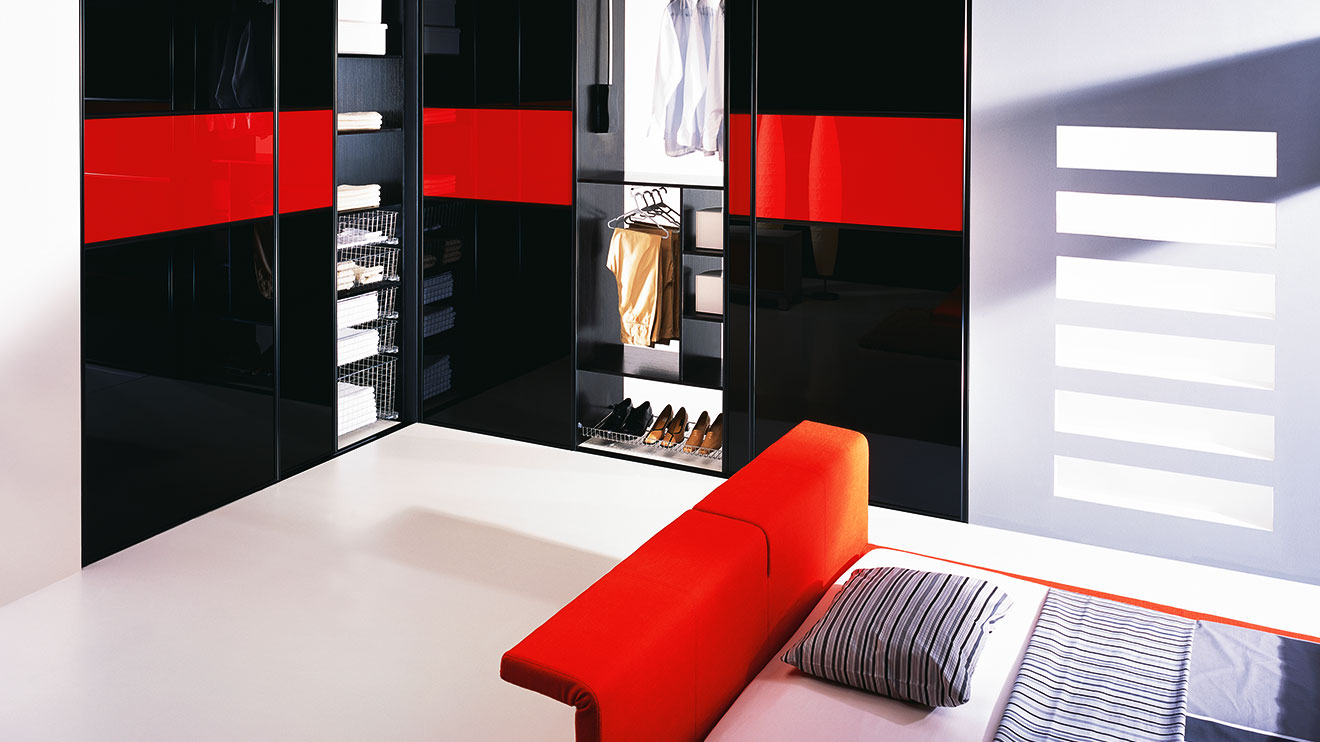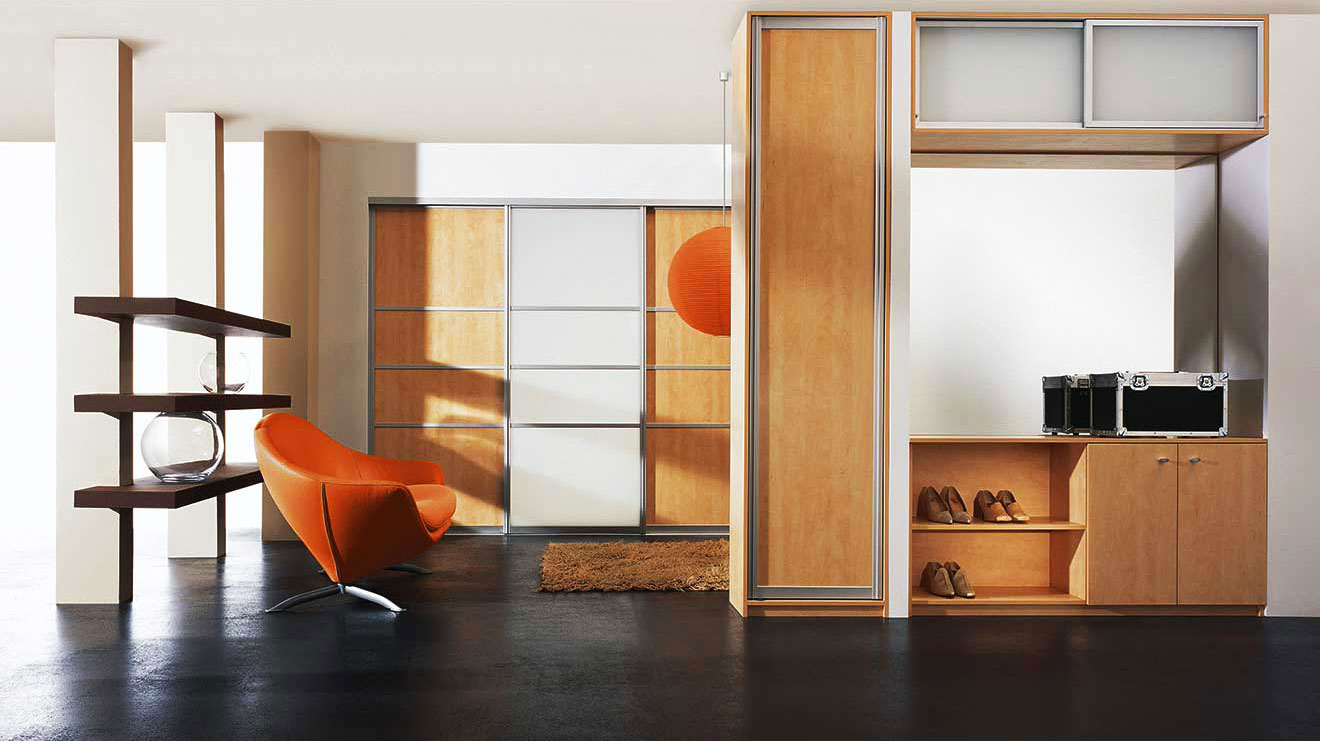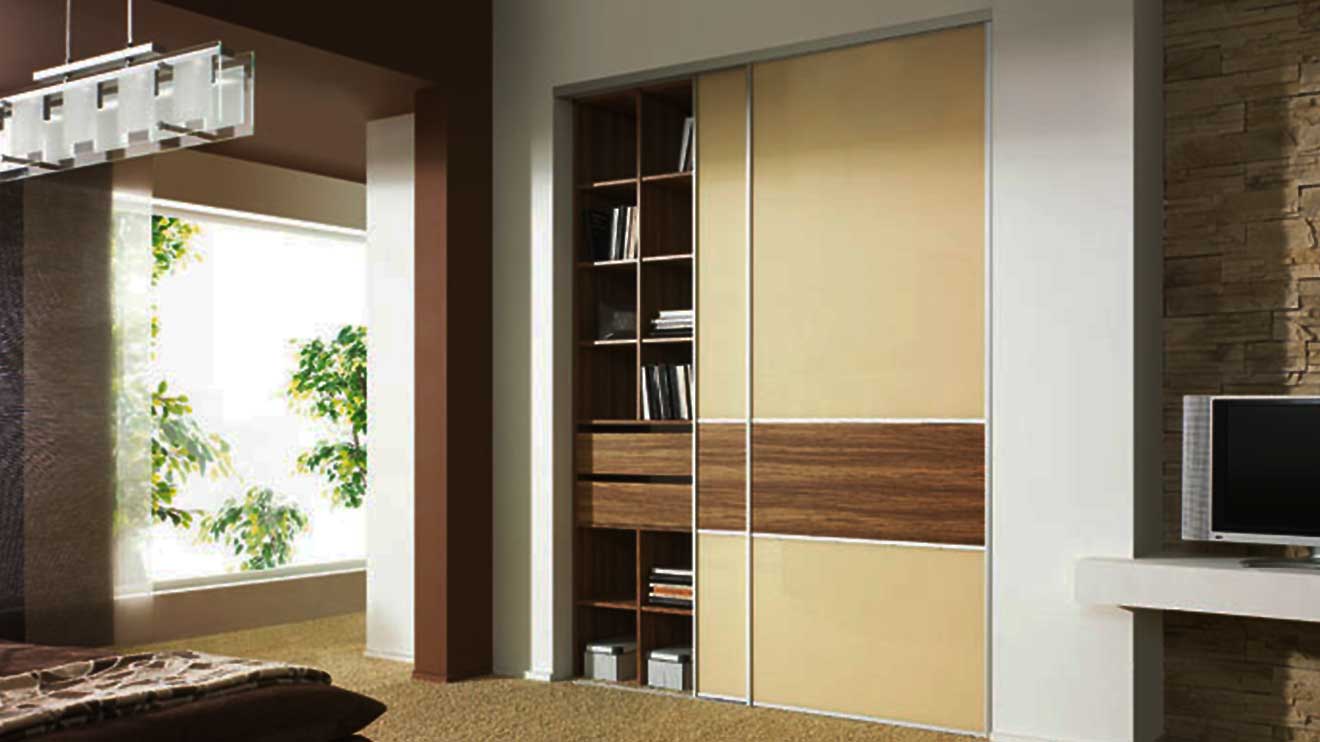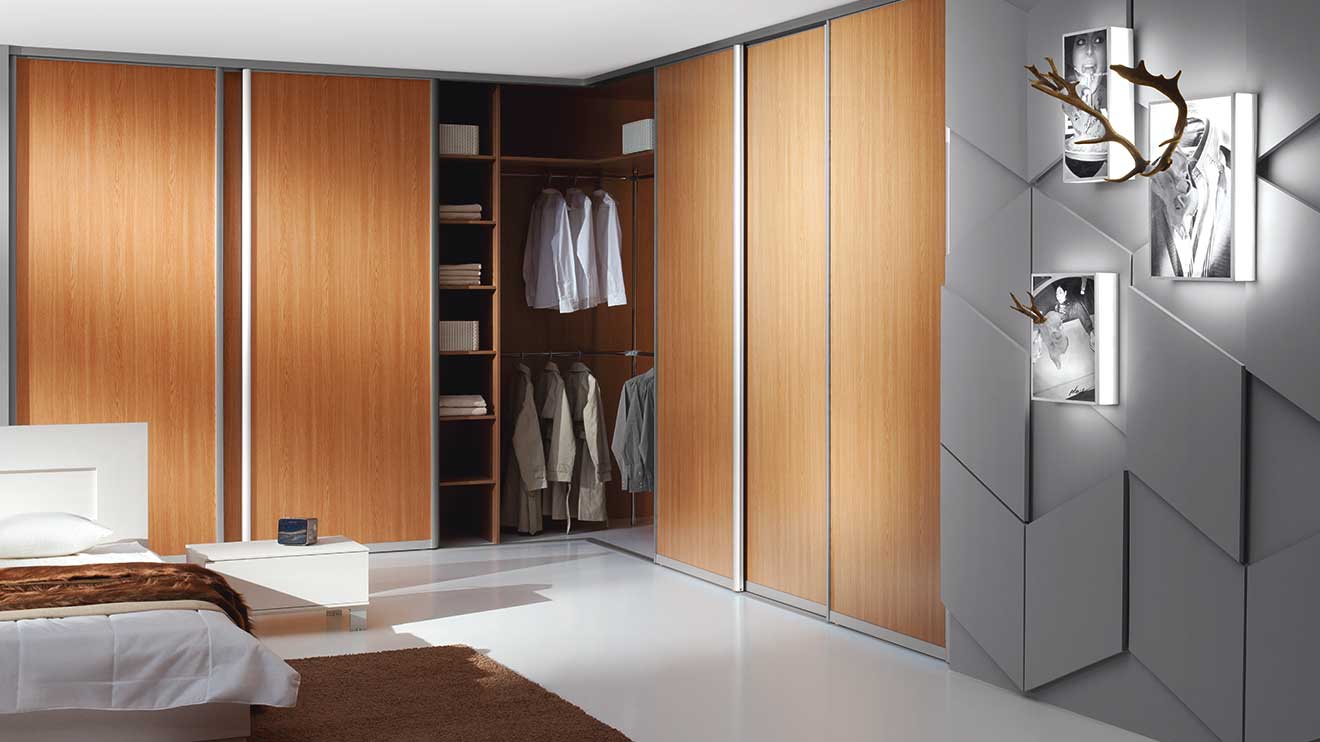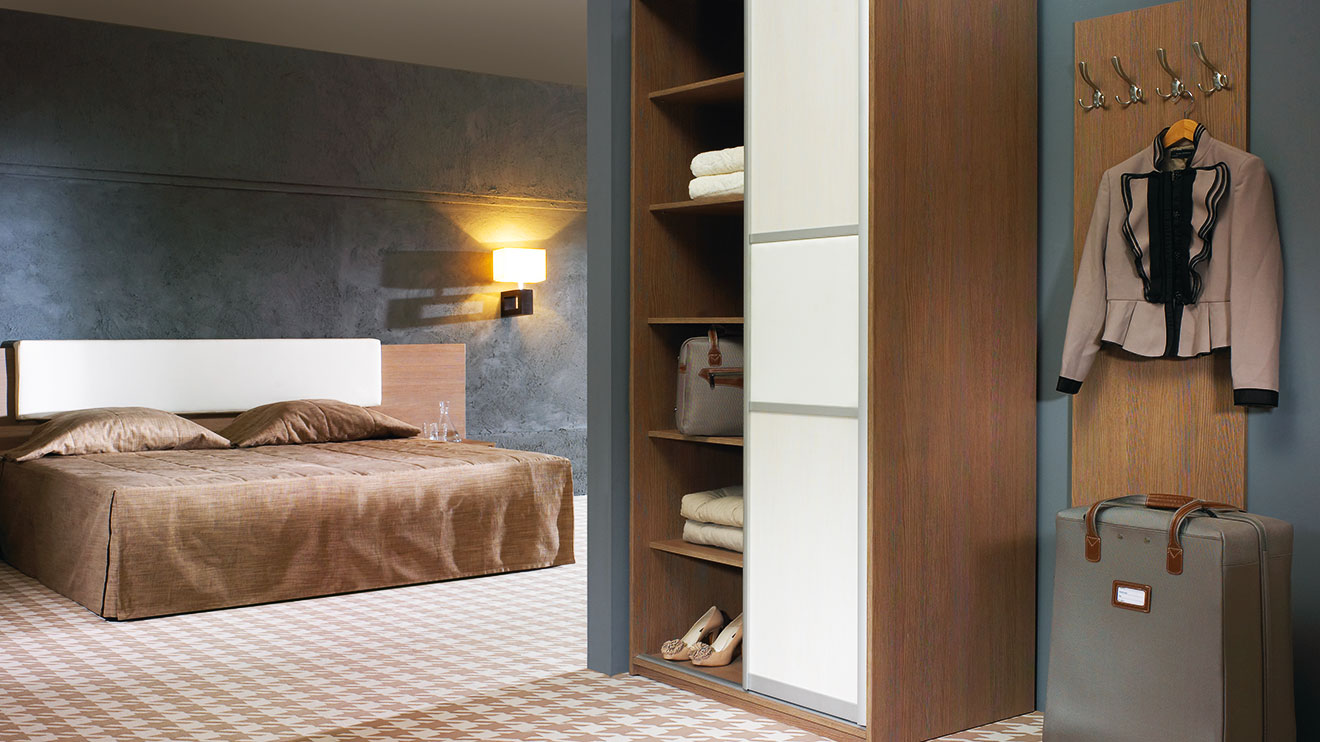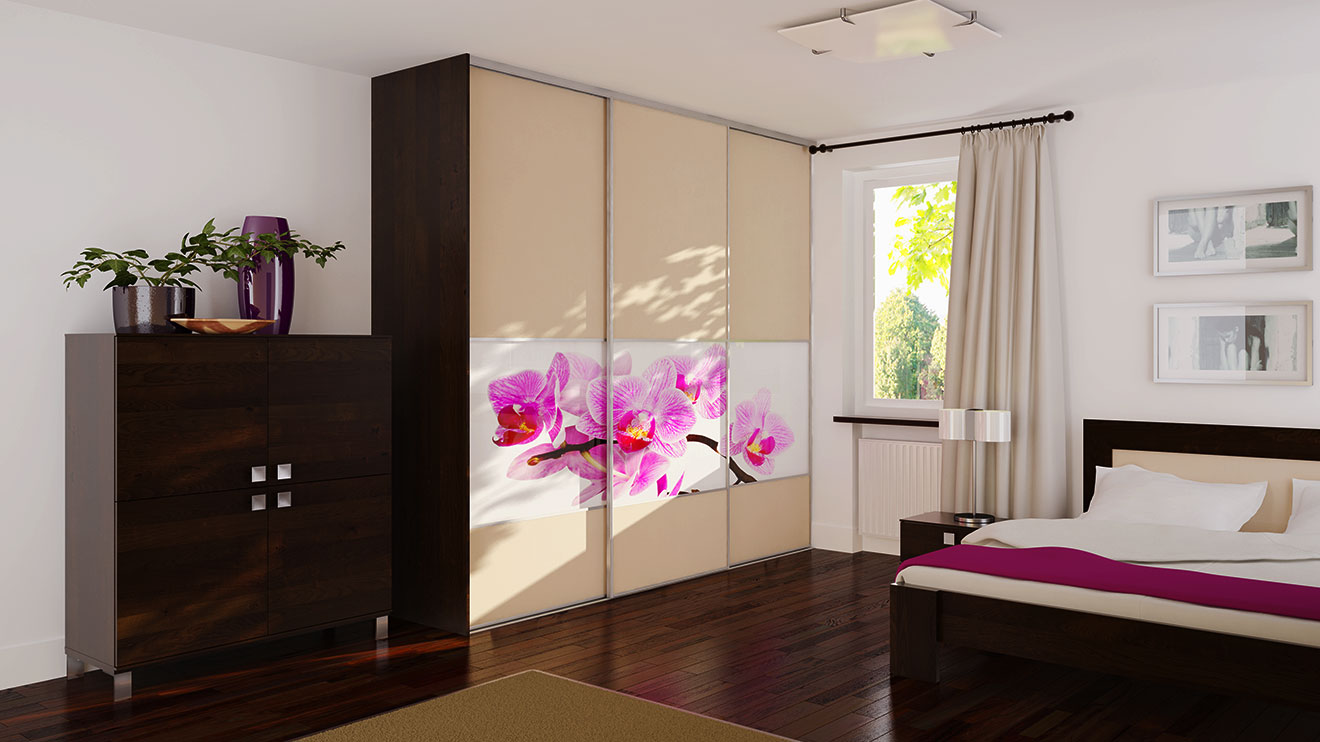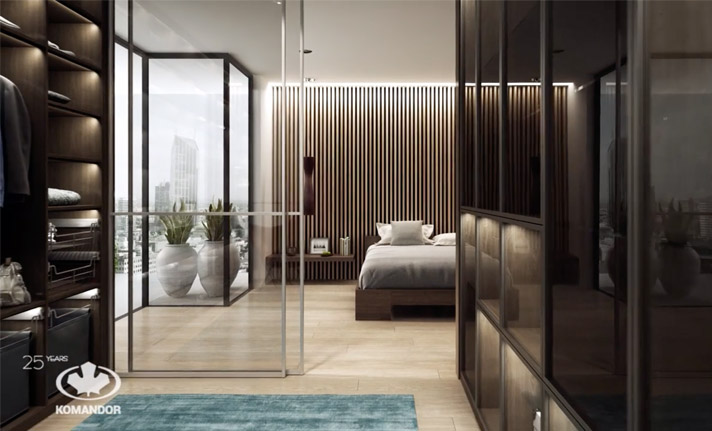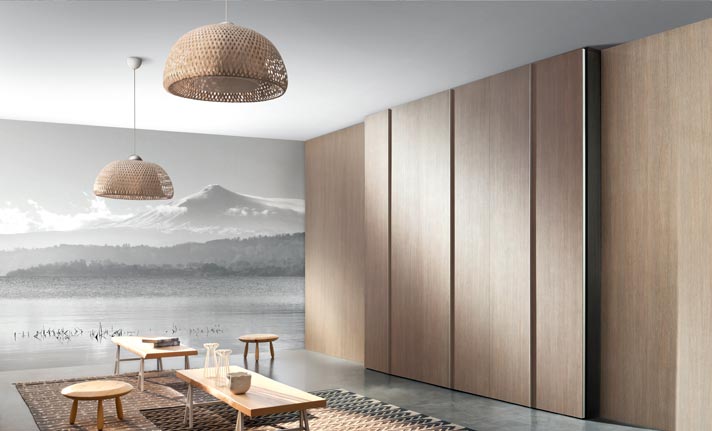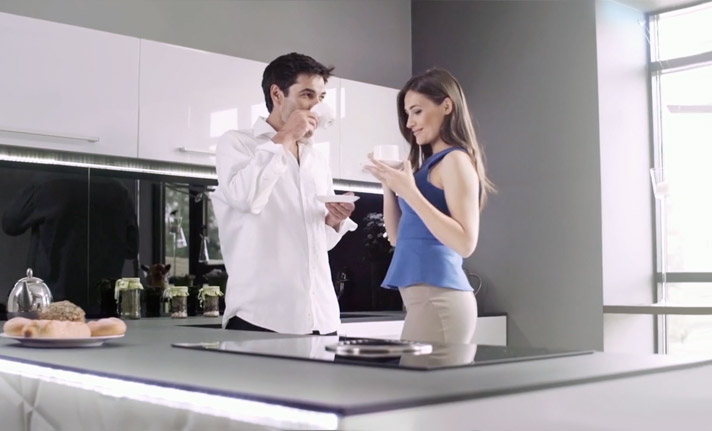Komandor make wardrobes suitable for every space. The standard width for a wardrobe is 60-65cm, height 250cm. The wardrobe interior is around 5-55cm deep and 10cm is for those with a sliding doors track.

The different types of wardrobes are:
Recess wardrobe – Room walls serve at the same time as wardrobe's walls. It is fitted to the room height and it doesn't require a separate wardrobe top. The floor of the room is also used as wardrobe's floor.
Full wardrobe – its carcass is made of side and rear walls as well as of floor and ceiling made of board panel.
Wardrobe with a storage place – this type of wardrobe is usually fitted in rooms over 2,5 m tall.
L-shape wardrobe – this type of wardrobe is fitted on two perpendicular walls meeting in one corner. It can be full or recess.
Wardrobes are complimented with doors of different types: sliding, pivoting or folding (or their combinations- without interfering into wardrobe's style)
After making a decision on the choice of a room where the wardrobe will be situated, it is advice to consider what type of items would be kept inside it. He have to estimate the number of shelves, drawers, rods and baskets etc. It is possible to do by writing down all items we want to store there. It may be:
- Vacuum cleaner
- Ironing board
- Iron
- Underwear
- Bath towels
- Daily shoes and season shoes
- Bags, suitcases
- Hung long clothes (coats, gowns)
- Hung short clothes (trousers, skirts, shirts, jackets)
- Season items (skis, snowboard, caps, gloves)
- Everyday use clothes
- Hats and decorative items (scarves, belts)
- Toys
This list is a huge facilitation for designers of You wardrobe who will adjust it to your individual requirements as well as they choose indispensable accessories. The essential issue is a maximal use of an interior, that is why the way of wardrobe arrangement has to be taken into the careful consideration.
The practical idea is to divide the wardrobe to two separate parts: for Her and for Him. These two modules would be identically equipped and separated by one module where long hung clothes may be stored.
Interior of wardrobes consist of multiple elements that is why customers should know some details about its application and functions:
RODS
Rods with hangers enable for separation of short clothes out from long ones or for division between daily and season clothes. Rods for short clothes may be fixed on two levels with consideration of 10mm of distance between them. Such type of solution extends the space for hung clothes in the wardrobe. Rods devoted to long clothes, coats. Gowns should be installed on at least 180cm height from the floor. To avoid the phenomenon of rod bending under the load of clothes it is recommended that they would be not longer than 100 cm. In high rooms the pantographs can be applied which enable for lowering the upper rod and facilitates taking the clothes. This solution is comfortable especially for short people as well as the disabled.
If the depth of a wardrobe is smaller than 60 cm so the actual depth of interior is 50cm, the perpendicular slide-out hanger may be installed which would slide out from under the shelf. The essential issue is that the width of a recess would be at least 55 cm (which is the width of a hanger + side space on both sides).
SHELVES
Shelves are the indispensable element of each wardrobe. They can be shallow, deep, long or short, depending on needs. Every shelf should have its own destination, I. e. sweaters, sport suits, blouses as well as boxes with hats, caps etc. Wide and deep shelves are perfect for storing bedding, towels, blankets. They can be installed in separate module, so called the chiffonier or on the upper level because we do not need these items so often. The highest floor of a wardrobe, which is a storage shelf, is and ideal place for quilt, pillows as well as rarely used items such as suitcases, racks. The shoes can also be kept in the wardrobe, in specially prepared containers. The good idea is to install slide-out shelves made of laminated panel with the reling handle, which are fixed on the guide bars. On the surface of a shelf the metal levers may be fixed which are a mainstay for shoes or there can be applied the outwork baskets allowing for free access tro the shoes and ensuring an airflow in the wardrobe.
DRAWERS
Underwear, socks or tights are kept in the drawers of laminated panel or those of plastic case and wooden front. The drawers are usually 12cm deep and 50cm wide, but other sizes are also applied. Drawers can be additionally equipped with special baffles, dividing utility space for smaller modules. It is a perfect option when we care for the order in drawers and we want to avoid something to miss.
ACCESSORIES
The perfect option, apart from applied drawers in wardrobes, are pull-out baskets as well and metal, outwork shelves. Such accessories enable for investigate the contents of a wardrobe without need to pull the basket outside which appears to be very time-saving if wa want to find something immediately.
Recently, not only clothes are stored in cloakroom but also utility items i.e. vacuum cleaner, iron, ironing board, laundry dryer. That is why the perfect solution is a narrow recess where we can put the vacuum tube or fix the hanger for an iron.
MAINTENANCE
Wardrobe, as other pieces of furniture, requires maintenance and preservation. It is important to remember of cleaning the bottom guide bars, otherwise the door would not move due to the dust and bigger pieces of dirt which don't allow rolls to move through the guide bar.
It can result in faster use of rolling elements and lead to the difficulties with sliding the door. The interior of a wardrobe, usually made of laminated panel or fournir may be cleaned by spray cleaning agents, milks or with fluids designed for wooden surfaces maintenance. Cleaning agents, however, cannot be put directly onto the surface of the panel because it causes too much moisture and dissection of a panel. It should be considered that cleaning agents causing de-pigmentation of a panel must not be used.
Szafę jak wszystkie meble należy czyścić o konserwować. Szczególną uwagę zwracamy na stan czystości torów dolnych. Gromadzący się w nich kurz i brud może z czasem wkręcać się w kółka, co znacznie utrudni nam przesuwanie drzwi. Takie zaniedbanie może doprowadzić do zniszczenia systemu jezdnego.
Wnętrze szafy (wykonanego zwykle z forniru lub płyty laminowanej) czyścimy środkami przeznaczonymi do pielęgnacji drewna. Mogą to być mleczka, aerozole, płyny. Należy jednak pamiętać, aby nie wylewać żadnych płynów bezpośrednio na półki, gdyż mogą one wilgotnieć i w konsekwencji puchnąć i rozwarstwiać się.
Kiedy już wiemy, jak powinna być wyposażona nasza szafa, przyszedł czas na wybór drzwi. Nie kierujmy się w tej kwestii tylko aktualną modą, ale także własnym poczuciem estetyki oraz tym, jak będą się komponowały w danym pomieszczeniu. Bogata oferta materiałów pozwala na zaprojektowanie takiej zabudowy, która będzie ozdobą mieszkania lub domu przez długie lata.
Jeżeli jesteś:
- Tradycjonalistą, to powinieneś wybrać drzwi z płyty laminowanej. Ponad 60 dekorów o przeróżnej strukturze, barwie i usłojeniu pozwoli na dopasowanie odpowiedniego koloru płyty. Płyta laminowana, fornir i okleina imitująca naturalne drewno sprawią, że w pomieszczeniu poczujemy się bezpiecznie i komfortowo.
- Osobą dynamiczną, która lubi wyzwania i zmiany, nie bój się połączeń żywych kolorów. Baw się głębią i perspektywą.
- Osobą romantyczną i spokojną, to szklane drzwi z elementami piaskowanymi oraz pastelowe barwy sprawią, że wnętrze zyska na łagodności.
- Człowiekiem żyjącym w zgodzie z naturą – bambus, fornir, czy rattan to wypełnienia, które będą współgrały z Twoim charakterem.
- Estetą, ceniącym sobie porządek w najbliższym otoczeniu, to chłodne fronty w jasnych barwach sprawią, że otoczenie stanie się przestronne i uporządkowane.
- Osobą nowoczesną, która lubi wszelkiego rodzaju nowinki, to zdecyduj się na wypełnienia drzwi w industrialnym stylu i fakturze.








